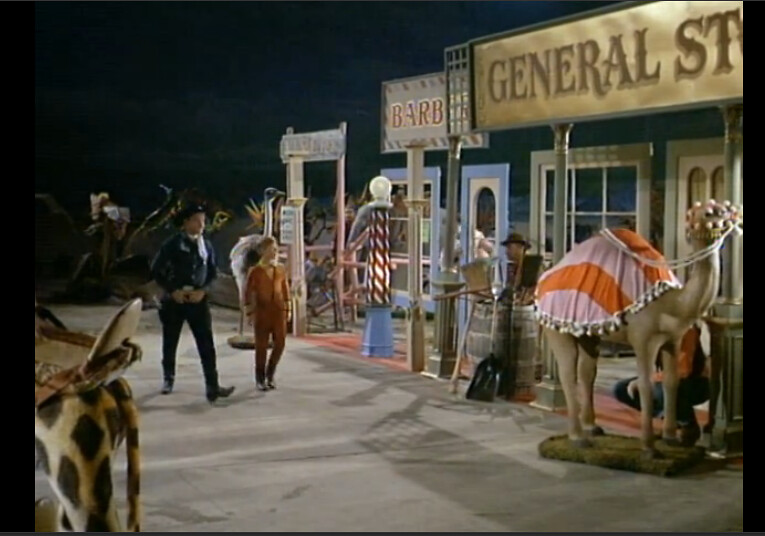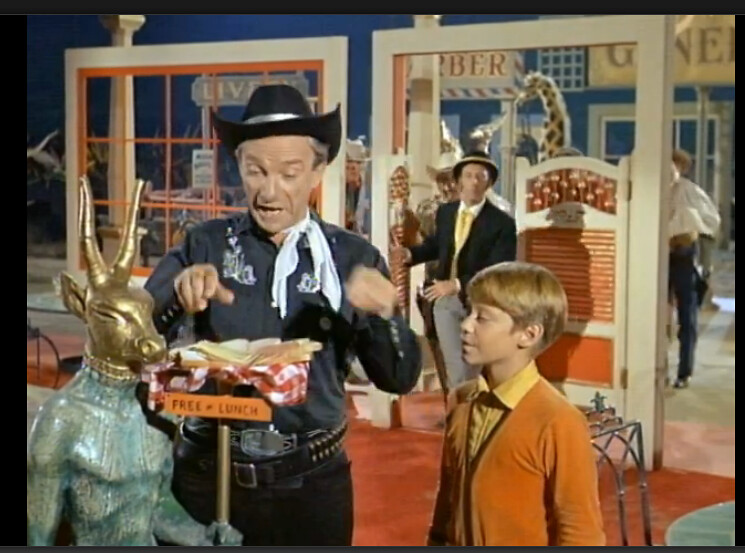It seems more likely to me this is direct inspiration than happenstance.
Possibly, sure. But that would be a more convincing argument if it were a purely aesthetic choice, one unaffected by budgetary considerations. It's equally plausible that both productions independently chose the same approach because it was a logical adaptation to the need to do a sci-fi Western on a soundstage with limited budget and time. Because the underlying
circumstances were similar, and thus could've produced similar results by convergent evolution, the similarity in and of itself is insufficient to prove direct inspiration.
Laypeople are always quick to assume that any similarity they see between two works of fiction is evidence of one directly borrowing from the other. But in fact, different creators independently coming up with similar works is something that happens
all the time. It's almost impossible to avoid, in fact. The number one reason why script pitches and story submissions get rejected is "We're already doing one like that." Different creators are employing a common set of tools, following a common set of techniques, playing to the same audience, building on the same cultural referents and foundations, participating in the same social zeitgeist. So convergence is unavoidable. It's not "happenstance" if two creators arrive at the same result without any mutual awareness, because they're both shaped by the same environment.
True, there were a lot of minimalist sets in the '60s -- as I mentioned before,
Batman did the same thing. So no doubt the directors or art directors of
Star Trek, Lost in Space, Batman, and other shows of the period were working from common influences and inspirations. And those influences
could have included one another's work, but they could also have been some other, earlier source that they were all independently inspired by, like theatrical set design as someone mentioned above.
Batman, which was celebrated at the time for its aesthetic, was highly influenced by the Pop Art movement, the work of artists like Lichtenstein and Warhol.
Star Trek's design style was strongly influenced by the futurist architectural style known as "
Googie" as well as
Minimalism. And so forth.
So both these shows would've been awash in a sea of artistic and cultural influences. It wasn't just these two episodes existing in isolation. So we can't assume the similarity is due to anything as monocausal as one directly borrowing from the other. Really, given how ubiquitous Westerns were in '60s TV and how much minimalist influence there was in '60s genre TV, it's not at all surprising that the two trends would've converged more than once. Direct influence is a possible cause for the similarity, but far from a necessary one.









 But I think the fact that both show's production designers came up with similar solutions to a budgetary issue is fascinating, and, I suspect, possibly inspired by such minimalist sets as used on stage.
But I think the fact that both show's production designers came up with similar solutions to a budgetary issue is fascinating, and, I suspect, possibly inspired by such minimalist sets as used on stage.